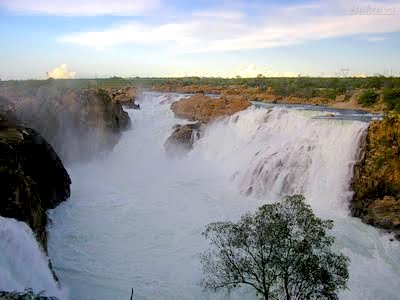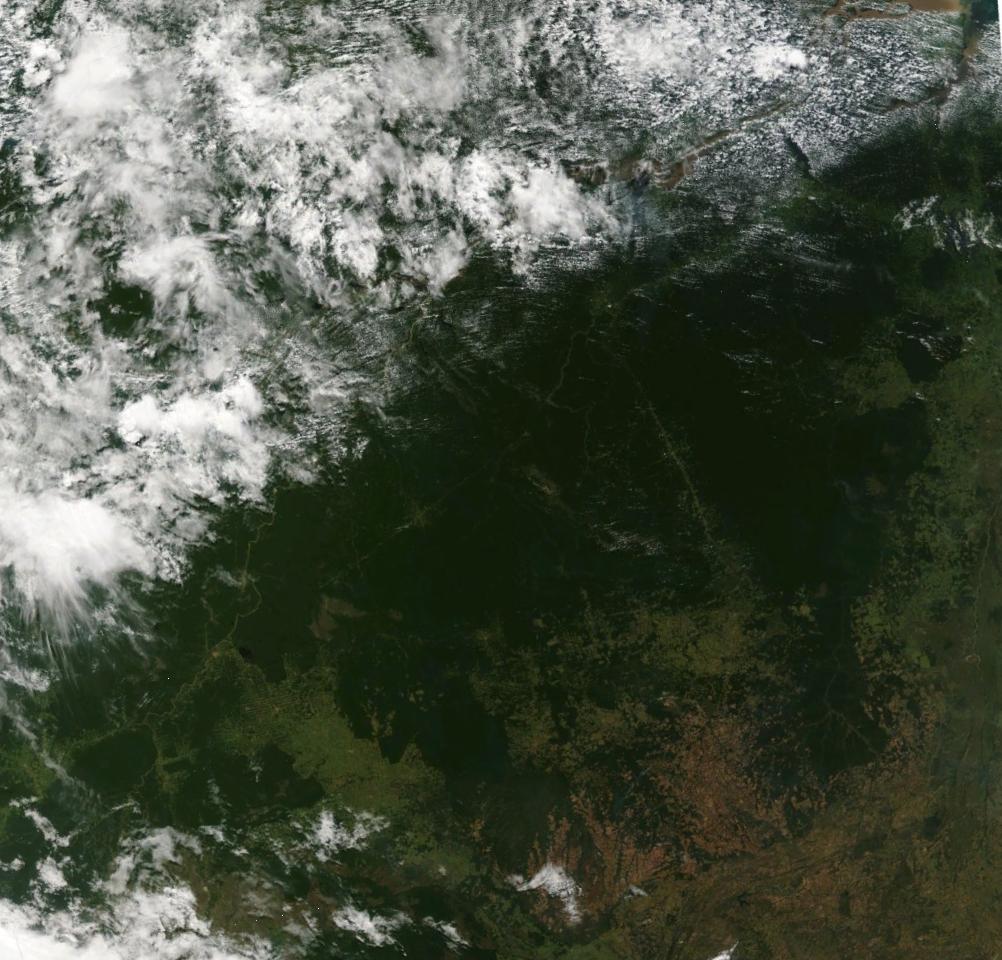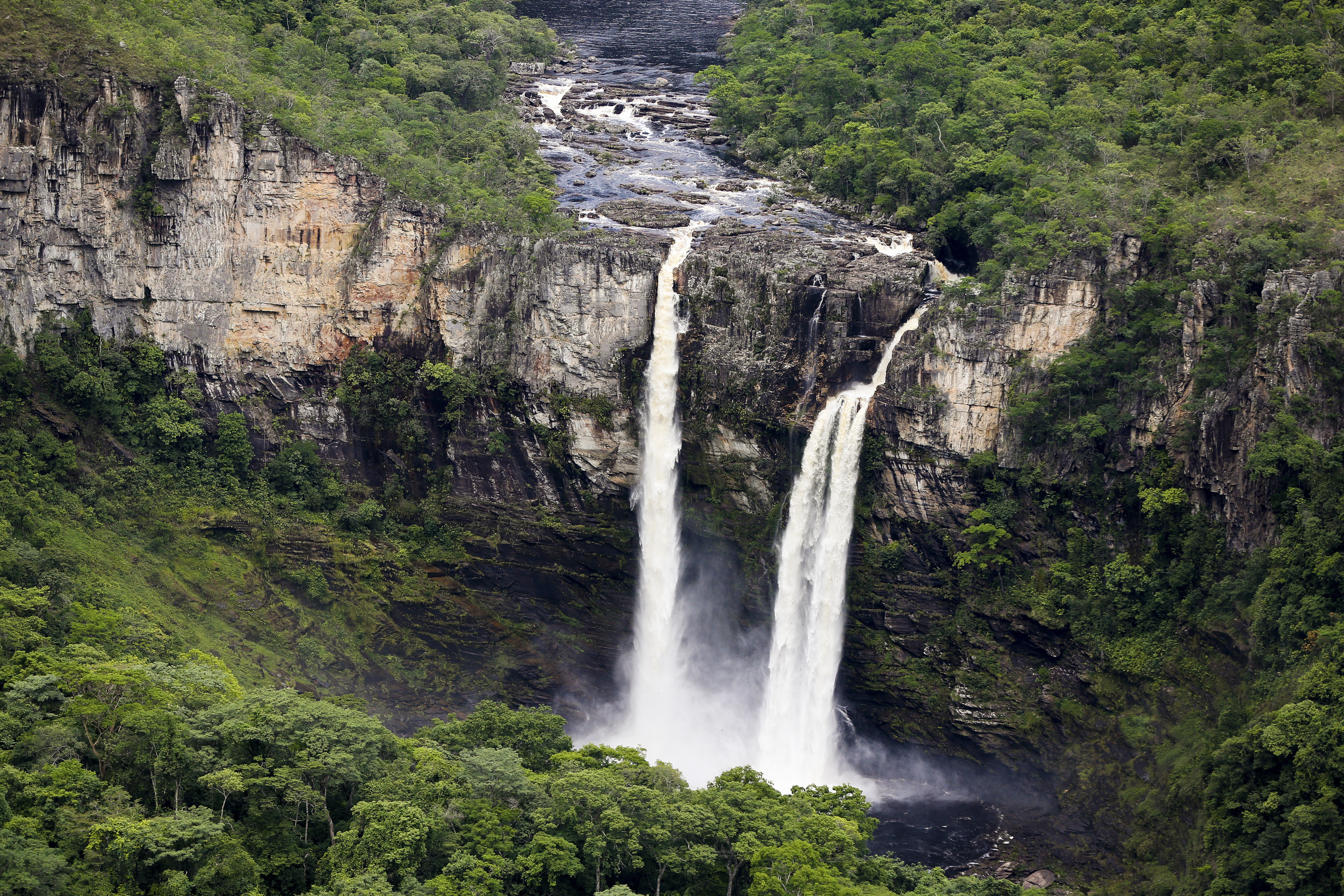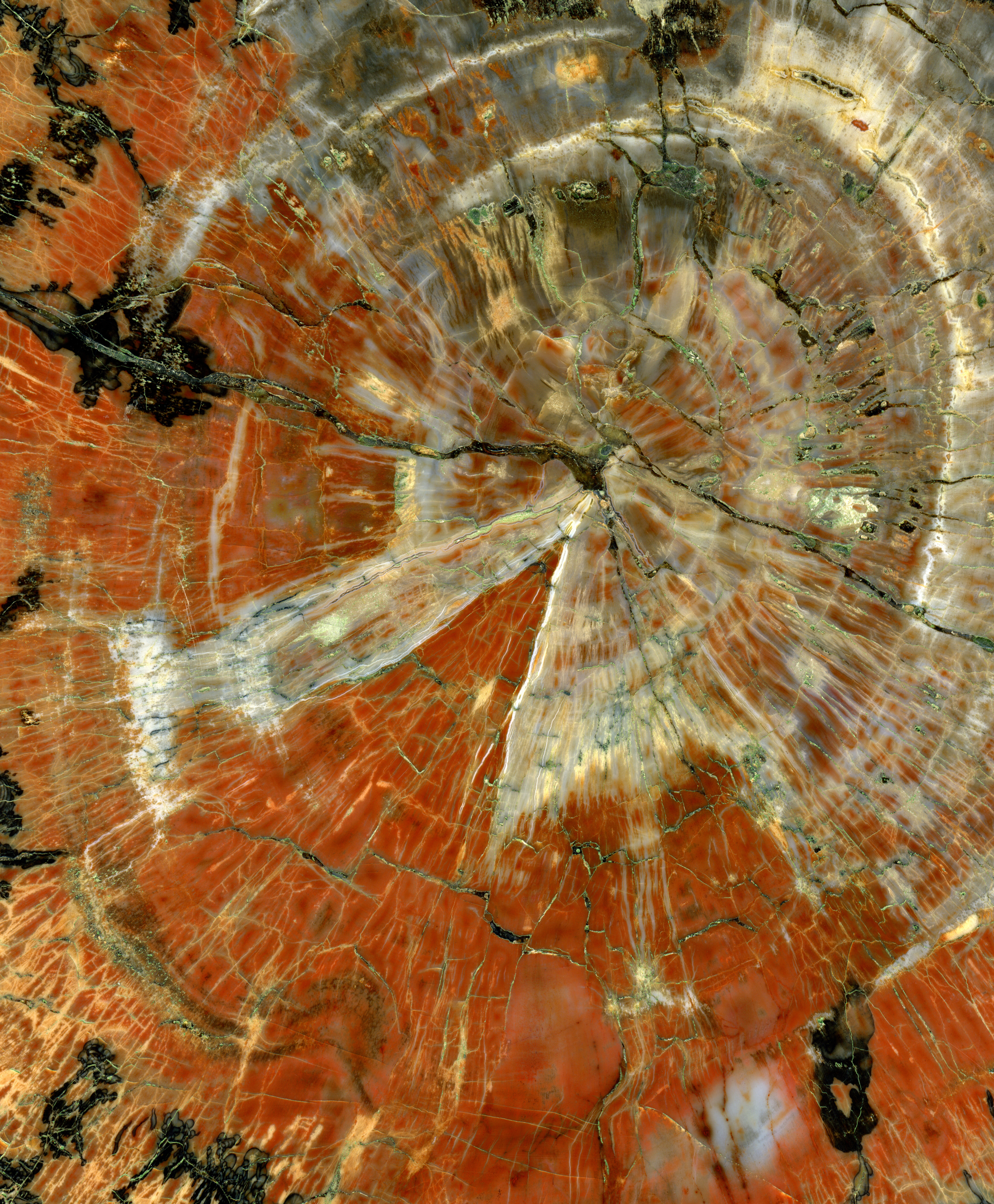|
Tocantins Fossil Trees Natural Monument
The Tocantins Fossil Trees Natural Monument () is a natural monument in the state of Tocantins, Brazil. Location The protection unit was created by law 32.152 on 4 October 2000. It lies with the municipality of Filadélfia, Tocantins. The buffer zone includes the municipality of Babaçulândia. It is administered by the Tocantins Nature Institute (Instituto Natureza do Tocantins). The advisory council includes members of the Tocantins Nature Institute, Federal University of Tocantins, Filadélfia municipality, Bielândia Association of Small Farmers and representatives of local businesses. Most of the visitors to the palaeontological site are groups of high school students or scholars from various parts of the country. The visitor reception centre for the national monument was inaugurated on 2 June 2015 by governor Marcelo Miranda. It had administrative headquarters, bathrooms, male and female quarters, an auditorium and parking. This would make it possible for students to sta ... [...More Info...] [...Related Items...] OR: [Wikipedia] [Google] [Baidu] |
Araguaína
Araguaína () is a municipality located in the Brazilian state of Tocantins. Its population was 183,381 (2020), and its area is . Education Higher education The city has campuses from several higher education institutions. There are two campuses of the public Federal University of Tocantins State (UFT). One campus is in the neighborhood Cimba, which has courses in Portuguese, English, Mathematics, physics, chemistry, geography, history, logistics, cooperativism, and tourism with the other campus situated outside the city, offering courses in veterinary sciences and zoology. The city is home to the private university ITPAC, an educational institute offering medical, dentistry, and law classes. Another private university is Santa Cruz, which has courses in law. The private university Facit has courses in ortodontology, and software development. Transport Public transport in the city is done by the bus companies Cooperlota and Lontra. The city is served by Araguaína Airp ... [...More Info...] [...Related Items...] OR: [Wikipedia] [Google] [Baidu] |
Natural Monument (Brazil)
A Natural Monument () in Brazil is a type of protected area of Brazil. They are created by law. The purpose of a natural monument A natural monument is a natural or cultural feature of outstanding or unique value because of its inherent rarity, representative of aesthetic qualities, or cultural significance. They can be natural geological and geographical features such as w ... is to conserve unique or very beautiful natural sites. Definition The Natural Monument class of conservation unit was defined by the law 19/93 of 23 January 1993.Decreto-Lei n.º 19/93 de 23-01-1993 Versão: 1 -Artigo 8.º This basic objective of this type of unit is to preserve natural sites that are unique and/or have great scenic beauty. They may be private property as long as the owner's use is compatible with the objectives. If not, the area is expropriated. The public may visit the natural monuments, and research may be conducted with permission of the responsible agency. Selected list Notes S ... [...More Info...] [...Related Items...] OR: [Wikipedia] [Google] [Baidu] |
Tocantins
Tocantins () is one of the 26 states of Brazil. It is the newest state, formed in 1988 and encompassing what had formerly been the northern two-fifths of the state of Goiás. Tocantins covers and had an estimated population of 1,496,880 in 2014. Construction of its capital, Palmas, began in 1989; most of the other cities in the state date to the Portuguese colonial period. With the exception of Araguaína, there are few other cities with a significant population in the state. The government has invested in a new capital, a major hydropower dam, railroads and related infrastructure to develop this primarily agricultural area. The state has 0.75% of the Brazilian population and is responsible for 0.5% of the Brazilian GDP. Tocantins has attracted hundreds of thousands of new residents, primarily to Palmas. It is building on its hydropower resources. The Araguaia and Tocantins rivers drain the largest watershed that lies entirely inside Brazilian territory. The Rio Tocantins ... [...More Info...] [...Related Items...] OR: [Wikipedia] [Google] [Baidu] |
Filadélfia, Tocantins
Filadélfia, Tocantins is a municipality in the state of Tocantins in the Northern region of Brazil. The municipality holds the Tocantins Fossil Trees Natural Monument, which preserves one of the largest collections of fossilized Permian trees in the world. See also *List of municipalities in Tocantins This is a list of the municipalities in the States of Brazil, state of Tocantins (state), Tocantins (TO), located in the North Region, Brazil, North Region of Brazil. Tocantins is divided into 139 Municipalities of Brazil, municipalities in an are ... References Municipalities in Tocantins {{Tocantins-geo-stub ... [...More Info...] [...Related Items...] OR: [Wikipedia] [Google] [Baidu] |
Babaçulândia
Babaçulândia is a municipality in the state of Tocantins, Brazil. Babaçulândia was founded on 1 January 1954. It has an area of . The most recent population figure as of 2020 was 10,666 people. The municipality includes the buffer zone of the Tocantins Fossil Trees Natural Monument. See also *List of municipalities in Tocantins This is a list of the municipalities in the States of Brazil, state of Tocantins (state), Tocantins (TO), located in the North Region, Brazil, North Region of Brazil. Tocantins is divided into 139 Municipalities of Brazil, municipalities in an are ... References Municipalities in Tocantins 1954 establishments in Brazil {{Tocantins-geo-stub ... [...More Info...] [...Related Items...] OR: [Wikipedia] [Google] [Baidu] |
Federal University Of Tocantins
The Federal University of Tocantins (, UFT) is the public, federal university of the state of Tocantins, in Brazil. The university has campuses spread throughout the state, including in Araguaína, Arraias, Gurupi, Miracema, Palmas, Porto Nacional and Tocantinópolis. See also *List of federal universities of Brazil External links * Universidade Federal do Tocantins The Federal University of Tocantins (, UFT) is the public, federal university of the state of Tocantins, in Brazil. The university has campuses spread throughout the state, including in Araguaína, Arraias, Gurupi, Miracema, Palmas, Porto N ... Federal universities of Brazil Universities and colleges established in 2000 2000 establishments in Brazil Palmas, Tocantins {{Brazil-university-stub ... [...More Info...] [...Related Items...] OR: [Wikipedia] [Google] [Baidu] |
Marcelo Miranda (politician)
Marcelo Miranda (born October 10, 1961) is an ex-governor of the Brazilian state of Tocantins. He is a member of the Brazilian Democratic Movement The Brazilian Democratic Movement (, MDB) is a Brazilian political party. It is considered a " big tent party" and it is one of the parties with the greatest representation throughout the national territory, with the most numbers of senators, .... References 1961 births Living people Governors of Tocantins Brazilian Democratic Movement politicians Place of birth missing (living people) 21st-century Brazilian politicians {{Brazil-politician-stub ... [...More Info...] [...Related Items...] OR: [Wikipedia] [Google] [Baidu] |
Cerrado
The Cerrado () is a vast ecoregion of Tropics, tropical savanna in central Brazil, being present in the states of Goiás, Mato Grosso do Sul, Mato Grosso, Tocantins, Maranhão, Piauí, Bahia, Minas Gerais, São Paulo (state), São Paulo, Paraná (state), Paraná and the Federal District (Brazil), Federal District. The core areas of the Cerrado biome are the Brazilian highlands – the ''Planalto''. The main habitat types of the Cerrado consist of forest savanna, wooded savanna, park savanna and grass, gramineous-woody savanna. The Cerrado also includes savanna wetlands and gallery forests. The second largest of Biomes in Brazil, Brazil's major habitat types, after the Amazon rainforest, Amazonian rainforest, the Cerrado accounts for a full 21 percent of the country's land area (extending marginally into Paraguay and Bolivia). About 75% of the Cerrado’s 2 million km2 is privately owned. Vast amounts of research have shown that the Cerrado is one of the richest of all tropi ... [...More Info...] [...Related Items...] OR: [Wikipedia] [Google] [Baidu] |
Petrified Wood
Petrified wood (from Ancient Greek meaning 'rock' or 'stone'; literally 'wood turned into stone'), is the name given to a special type of ''fossilized wood'', the fossilized remains of terrestrial plant, terrestrial vegetation. ''Petrifaction'' is the result of a tree or tree-like plants having been replaced by stone via a mineralization process that often includes permineralization and replacement. The Carbon-based life, organic materials making up cell walls have been replicated with minerals (mostly silica in the form of opal, chalcedony, or quartz). In some instances, the original structure of the stem tissue may be partially retained. Unlike other plant fossils, which are typically impressions or compressions, petrified wood is a three-dimensional representation of the original organic material. The petrifaction process occurs underground, when wood becomes buried in water or volcanic ash. The presence of water reduces the availability of oxygen which inhibits aerobic dec ... [...More Info...] [...Related Items...] OR: [Wikipedia] [Google] [Baidu] |
Permian
The Permian ( ) is a geologic period and System (stratigraphy), stratigraphic system which spans 47 million years, from the end of the Carboniferous Period million years ago (Mya), to the beginning of the Triassic Period 251.902 Mya. It is the sixth and last period of the Paleozoic Era; the following Triassic Period belongs to the Mesozoic Era. The concept of the Permian was introduced in 1841 by geologist Sir Roderick Murchison, who named it after the Perm Governorate, region of Perm in Russia. The Permian witnessed the diversification of the two groups of amniotes, the synapsids and the Sauropsida, sauropsids (reptiles). The world at the time was dominated by the supercontinent Pangaea, which had formed due to the collision of Euramerica and Gondwana during the Carboniferous. Pangaea was surrounded by the superocean Panthalassa. The Carboniferous rainforest collapse left behind vast regions of desert within the continental interior. Amniotes, which could better cope with these ... [...More Info...] [...Related Items...] OR: [Wikipedia] [Google] [Baidu] |
Tree Fern
Tree ferns are arborescent (tree-like) ferns that grow with a trunk (botany), trunk elevating the fronds above ground level, making them trees. Many extant tree ferns are members of the order Cyatheales, to which belong the families Cyatheaceae (scaly tree ferns), Dicksoniaceae, Metaxyaceae, and Cibotiaceae. It is estimated that Cyatheales originated in the early Jurassic, and is the third group of ferns known to have given rise to tree-like forms. The others are the extinct ''Tempskya'' of uncertain position, and Osmundales where the extinct Guaireaceae and some members of Osmundaceae also grew into trees. In addition there were the Psaroniaceae including ''Tietea'' in the Marattiaceae, Marattiales, which is the sister group to all the leptosporangiate ferns. Other ferns which are also tree ferns, are ''Leptopteris'' and ''Todea'' in the family Osmundaceae, which can achieve short trunks under a metre tall. Osmunda regalis is sometimes considered a tree fern. Fern species with s ... [...More Info...] [...Related Items...] OR: [Wikipedia] [Google] [Baidu] |





